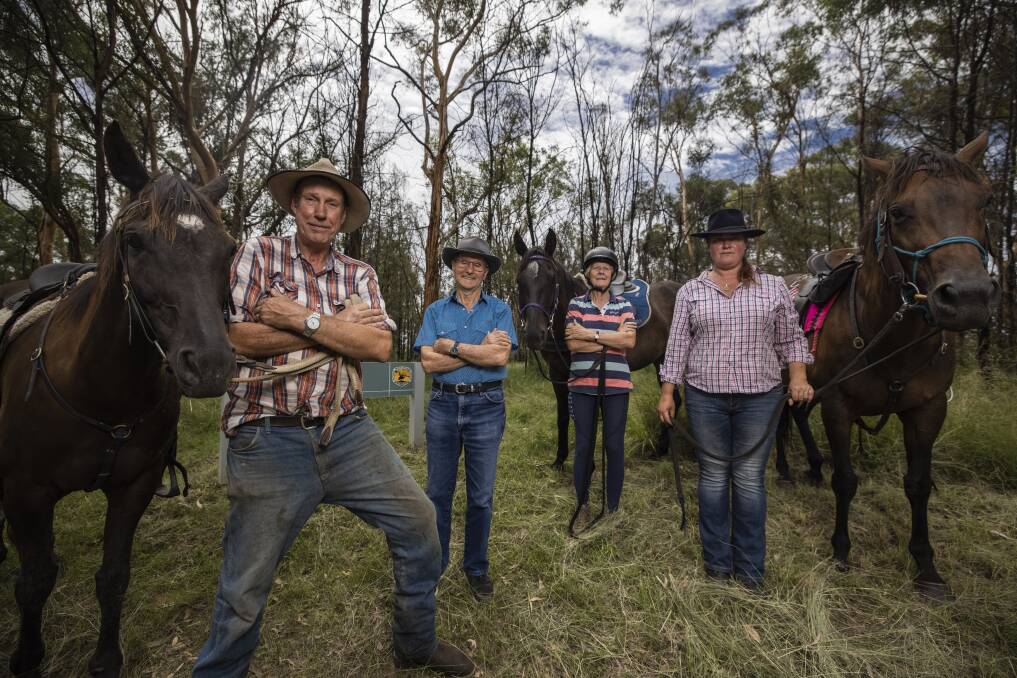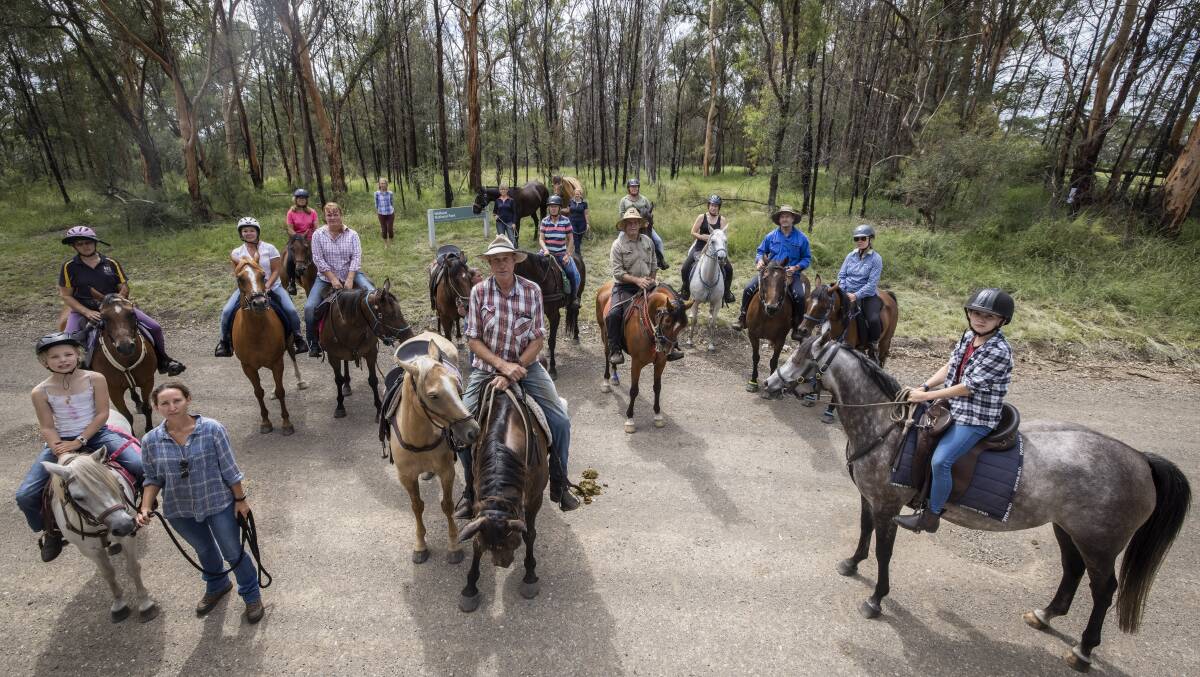A group of Hawkesbury horse-riders are enraged by a proposal to limit their use of trails in south east Wollemi National Park, as National Parks and Wildlife Services (NPWS) invites the community to have their say on the draft plan by March 14.
Create a free account to read this article
$0/
(min cost $0)
or signup to continue reading
The 'Draft Horse Riding Management Plan: South East Wollemi National Park' identifies proposed authorised horse riding routes in the park, adjacent to the localities of Mountain Lagoon, Upper Colo, Wheeny Creek, Blaxlands Ridge Road and Kurrajong, and details conditions for horse-riding there.

Wilberforce resident Brian Swan - who said he represented recreational horse riders in the area - said NPWS had been trying to introduce a plan of management in the area since 2007.
Mr Swan said he and other horse riders considered the trails of significance to pioneering heritage and to cultural identity, and thought they should continue to be allowed access to them.
"They [NPWS] claim to have input [into the plan] from neighbours and horse-riding fraternity, but that's not very transparent because four or five neighbours I contacted said they weren't contacted [by NPWS]," Mr Swan told the Gazette.
A spokesperson from the Department of Planning Industry and Environment (DPIE) - which manages NPWS - said regulating horse riding and clearly defining authorised trails would protect the natural and cultural heritage values of the park and ensure ongoing access to approved trails for horse riders.
The DPIE spokesperson told the Gazette that regulation would also ensure legal access to trails from public roads without impacting private lands and park neighbours.
"By formalising trails, NPWS will also take on routine maintenance of these tracks so they can continue to be enjoyed by riders while also minimising erosion," the spokesperson said.
The DPIE said the plan proposed to formalise 19 publicly-accessible horse-riding trails in the park covering 74 kilometres in total.
"A small number of 'informal' trails are not included in the Draft Horse Riding Management Plan because they are either not legally accessible from public roads, include sections of private lands, could impact Aboriginal sites and/or are not currently maintained to a standard to support less experienced riders," the spokesperson said.
However according to Mr Swan, the average length of the proposed trails was 2 kilometres, and the trails didn't meet up with each other, meaning horse riders would have to drive to more than one entry point to go on a decent-length ride.

"Two kilometres in and out would take you longer to drive there than to ride it," Mr Swan said.
"There's a concession to endurance [riders] that they're allowed to compete in competitions on two or three other tracks, but as a recreational rider, there are many tracks that have been there at least 200 years of white settlement - most likely they were originally Aboriginal tracks used for the last millenium. By stopping people riding on them, these tracks will deteriorate further and they'll disappear - that's a tragedy culturally and nationally.
"They're also good for bushwalking, and as bushfire routes - lines of defence for Blaxlands Ridge Road, Cedar Ridge Road and McMahons Road. The bushfire brigade during last year's fires cleared a couple of them for use themselves."
Mr Swan said NPWS had "chosen to assume that horse riders can't manage their own risk", whereas a free abseiler or rock climber had "no such motherhood about their use of the park - it's specifically horse riders" being targetted by the draft management plan.
"We understand that NPWS has no money. In Wollemi they have 500,000 hectares of national park, and clearly they don't have any resources to manage that and their modus operandi is to lock it away so no-one can see it."
The DPIE said horse riders were not being targeted unfairly: "On the contrary, NPWS is planning to formalise a network of 74 kms for horse riding and taking on the responsibility of maintaining those trails for riders," the spokesperson said, adding that the draft plan had been developed "with extensive input from representatives from horse riding groups".
Mr Swan's message to NPWS was simple: "Don't ban horse riding in the Wollemi National Park."
"We feel ignored and discriminated against and there's a lot more at stake here than a few tracks to ride on tomorrow - it's about our kids. We're not asking for anything off National Parks, only access."
The DPIE spokesperson said the draft plan "clearly recognises the history of horse riding in the area and provides for it to continue."
"The current consultation process provides an opportunity for people to provide further information to support pioneering heritage and cultural identity," the spokesperson said.
The department encouraged people to have their say on the draft plan by March 14 so they can record and review all feedback. To make a submission go to https://bit.ly/2YZtV08.


